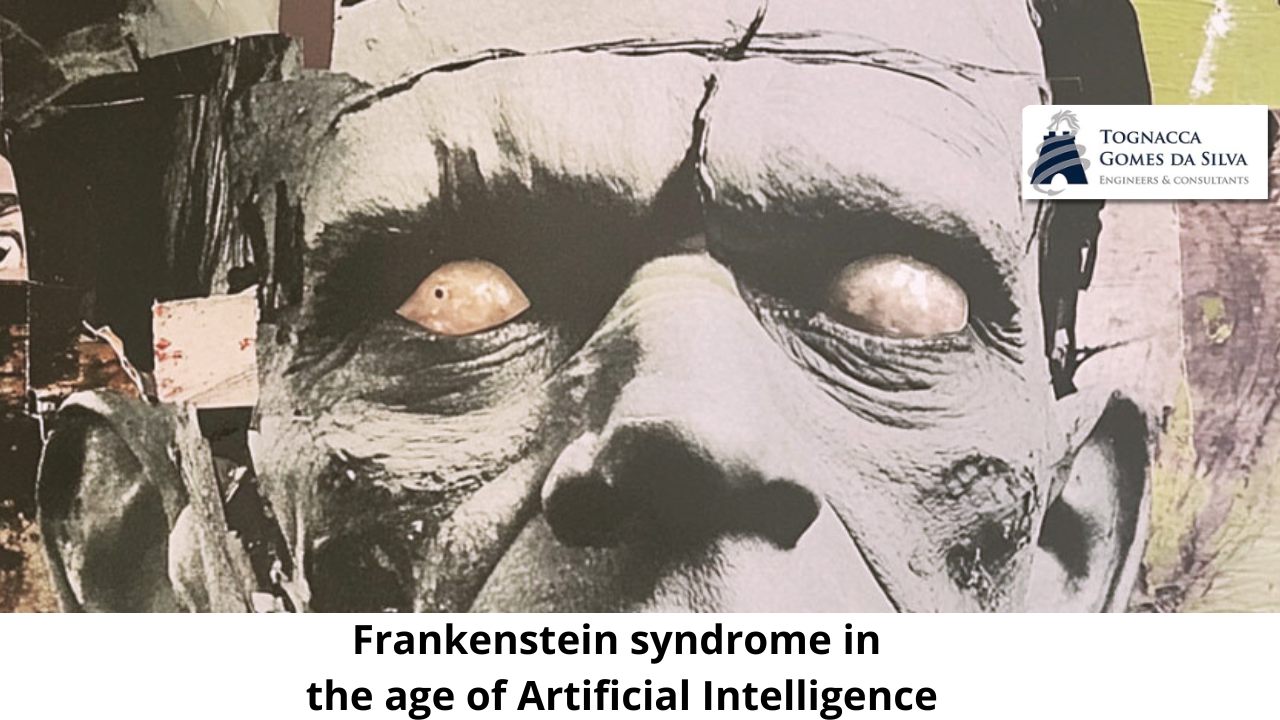The term derives from the novel Frankenstein, written by Mary Shelley in 1818, which tells the story of a scientist who creates artificial life, and is later haunted and destroyed by his own creation.
Although Shelley did not explicitly use the term “Frankenstein syndrome,” the work became a powerful metaphor for the perceived dangers of technological advancement without ethical or moral control. The concept gained strength in the 20th century, especially in the context of the development of new technologies, such as nuclear energy, biotechnology, and, more recently, artificial intelligence (AI). During the Cold War, for example, the fear surrounding nuclear weapons echoed this same fear: the fear of a technology that could cause mass destruction, something beyond the control of a single person or nation.
Frankenstein syndrome and fear of AI
The figure of Frankenstein’s monster symbolizes the fear of the unknown, a creation that, although born from the human mind, ends up exceeding the limits of its creator. This fear reflects a deep anxiety about what is beyond our understanding and control, a feeling that is amplified in the modern era by the complexity of new technologies.
Technology, in particular AI, appears as the new “monster” that raises this fear. Uncertainty about how these technologies will be developed and used feeds a feeling of alienation, generating resistance and fear. Just like Shelley’s monster, which was rejected by society and eventually turned against it, AI is seen by many as a potentially dangerous creation as its capabilities advance beyond the understanding of many.
Contemporary examples of Frankenstein syndrome
Contemporary examples abound: from the use of deepfakes, which challenge our perception of reality and can be used to manipulate information on a global scale, to advanced surveillance systems that raise questions about privacy and freedom. These surveillance systems are especially illustrative in the context of authoritarian regimes, such as China, where facial recognition technology is used to monitor the population on a large scale, fueling a state of control that many consider oppressive.
Another important example is the impact of automation on the job market. Companies that use AI to optimize logistical processes, HR automation and reduce operational costs, but these innovations result in mass layoffs and precarious working conditions, increasing social inequality. The fear that AI could replace human jobs creates a tension between technological innovation and the preservation of human dignity in the corporate environment.
The urgency of understanding and controlling AI
Frankenstein syndrome, in essence, represents a psychological and social barrier for those who are unfamiliar with new technologies. The lack of technical knowledge generates fear, resistance and exclusion, creating a gap between those who understand and use these technologies and those who see them as a threat. This gap is worsened by the rapid evolution of AI, which is being incorporated into systems ranging from virtual assistants to autonomous vehicles.
This gap can lead to serious social consequences. Those who cannot adapt to new technological demands run the risk of being marginalized, losing competitiveness in an increasingly digitalized job market. This fear, therefore, is not only irrational, it is a reaction to a reality in which lack of knowledge translates into loss of opportunity and relevance.
On the other hand, those who have knowledge and understanding of new technologies, especially Artificial Intelligence, find themselves in a position of power. In a society increasingly dependent on technology, the ability to understand and control these systems translates into influence and authority. This is reflected in the growing power of large technology companies, which shape the future of work and society with their innovations.
“Why can’t we design AI to meet our individual needs, rather than just using it or fearing it?”
The Frankenstein syndrome is ultimately a reflection of the inequalities inherent in the technological revolution. Those who lack the knowledge necessary to understand and control new technologies face a significant barrier, while technocrats familiar with these systems wield power disproportionately.
To overcome this barrier, it is essential to promote greater democratization of technological and analytical education. Only through digital inclusion, data interaction and technological literacy can we address these fears and ensure that AI and other technologies advance in ways that more individuals can understand and control, preventing technological advances from becoming the “monsters” of our time.
( fonte: MIT Technology Review )



